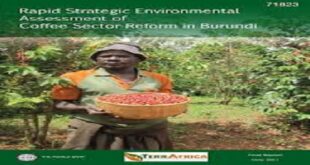A shift of focus has occurred. To explain these armed conflicts, analysts and policy makers looked at the groups in conflict and their claims in order to establish what these conflicts were about.26 brining away from the systemic level, analysis began to focus on local actors and local situations to better understand the reasons behind claims for self-determination aiming for indiependency, autonomy, secession, the control or participation in government. This shift in focus strongly influenced the development of conflict types by analysts seeking to clarify the nature of the issues in conflict. Conflict causes have in fact become the “most frequently invoked typology”‘ and within these, as Singer points out, “all the usual suspects are found: territory, idealorgy, dynastic legitimacy, religion, language, ethnicity, self-determination, resources, markets, dominance, equality, and, of course, revenge”?’ To a large extent this explains the plethora of definitions that now exist for contemptrare wars and the relentless search for a ‘golden formula’ applicable to all.
At opposite sides of the a etiological spectrum, two recent examples have included the development of an ‘ethnic conflict’ type and a ‘resource war’ type. ‘Ethnic conflict’ became in the beginning of the 1990s “the most fashionable term and last resort to explain contemporary social conflicts”.18 Yet, what do we mean when we attribute the ‘ethnic’ classification to conflicts as varied as Bosnia-Herzegovina, the Tamil insurgency in Sri Lanka, the civil wars in Rwanda, Burundi and Angola? There have been two main scholarly approaches to ‘ethnicity’. On the one hand, ethnicity is considered a primordial or inhereitem group characteristic that some scholars would argue is biologically based.29 On the other hand, ethnicity has been conceptualized as an instructmeant, a contextual, fluid and negotiable aspect of identity, “a tool used by Indivisuals, groups, or elites to obtain some larger, typically material end”.30 According to Timothy Sisk, instrumentalists argue that ethnic identities.
Although the distinction between these two seemingly opposing views may at first appear academic, “the extent to which scholars see ethnicity as immutable and innate versus socially constructed influences beliefs about the type of political systems that can best ameliorate conflict along ethnic lines.”32 In fact, contemporary conflict analysis has gradually realized that they “are not mutually exclusive and can in fact be-describing different sides of the same coin’:33 This has given rise to a ‘constructivist’ approach to ‘ethnice conflict’, one proposed by Lake and Roth child as well as Sisk. Lake and Roth child concluded that “ethnicity is not something that can be decided upon by individuals at will, like other political affiliations, but is embedded within and controlled by the larger society” and therefore it can only be understood within a ‘relational framework’.~ Sisk emphasized the idea of ethnic identity as “multifaceted and fluid” in that “not only may any single individual possess more than one identity characteristic, but the boundaries of group identity can change dramatically over time.
At the other end of the a etiological spectrum a number of recent studies have sought to portray contemporary wars as driven essentially by economic agentdas, particularly those conflicts in the developing world. As Jackie Colliers points out, this approach has been collated into that of ‘resource-wars’ and is sometimes put forward as reflecting a ‘new’ type of war.37 While the role of resources in the onset and continuation of violent conflicts has been the object of study for many decades, until recently studies have for the most part centered on the role played by scarcity or relative scarcity of resources as prime triggers of violence, both at the individual as well as the collective level.
Last word
In ‘On the economic causes of civil was’ Collier and Hoeffel use a model based on expected-utility theory under the premise that “rebels will conduct a civil war if the perceived benefits outweigh the costs of rebellion”. sing statistical regression methods to test four independent variables (per capita income, natural resource endowment, population size and ethno-linguistic fractionalization) the authors found that “higher per capita income reduces the duration of civil war and the probability of its occurrence” and that the predicted duration of civil war is found to be much shorter if income is higher. This leads them to conclude that “civil war is overwhelmingly a phantomneon of low income countries’:~~ As regards natural resources, the authors concluded that “the possession of natural resources initially increases the duration and the risk of civil war but then reduces it”. This is interpreted as being “due to the taxable base of the economy constituting an attraction for rebels wishing to capture the state’: On the other hand, a high level of naturereal resources diminishes the probability of war due to the enhanced financial capability of the government and hence “its ability to defend itself through military expenditure’.
 Thefashion2day Popular Fashion News Website
Thefashion2day Popular Fashion News Website




